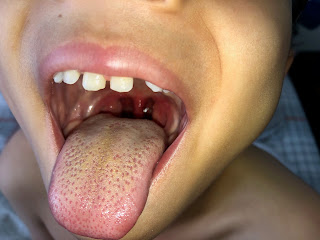
Guest Post: Providing house calls during the COVID-19 pandemic
Marguerite Duane, MD, MHA
Posted on July 29, 2020
As a family physician with a house calls-based direct primary care practice, almost all of my in-person visits are conducted in patients’ homes. House calls and telemedicine visits form the foundation of our practice. Therefore, when the COVID-19 pandemic hit, we were prepared to transition most of our care to telemedicine. However, there have been instances when the patient’s illness or injury necessitated an in-person visit.
For instance, in March soon after the pandemic began spreading locally, a mother texted me that her young son had a fever of 101.9 degrees, associated with a mild sore throat and productive cough, She had kept him home from school for four days, but his symptoms were not improving. At that time, our practice had not yet acquired N-95 masks, but I knew I needed to “see” the patient and possibly perform a rapid strep or flu test. Therefore, the boy's mother and I agreed to meet on her front porch where I took the full history, including additional pertinent positives (specifically headache), and negatives, such as no shortness of breath, body aches, ear pain, nausea or vomiting.
Since streptococcal pharyngitis and influenza were at the top of my differential, I needed to evaluate the patient, but since COVID-19 was also possible, I wanted to limit my exposure so I did not go inside the home. Instead, I asked the mother to take a picture of her son’s throat (Figure 1) and then via a video call collected more information which indicated that a rapid strep test was necessary. I demonstrated for the mom how to swab the back of her son’s throat to collect the sample, which she did. Then I was able to run the test, which was positive. The diagnosis was a huge relief for the mother, as her son's fever was diagnosed without ever having to leave her home, minimizing their risk for possible exposure to the coronavirus.
 |
| Figure 1. Streptococcal pharyngitis. |
I pride myself on caring for the whole person in the context of their community, considering not only their physical symptoms, but their social determinants of health. Rather than focus on one bodily system or disease, I consider patients’ preventive and chronic health care needs, as well as address acute issues or injuries.
Over the last couple of months, I did a series of family visits, conducting well child checks and administering vaccines, screening adults for disease, and in general providing the care patients needed in the comfort of their homes. One afternoon, I saw a father for an acute injury, addressed early pregnancy symptoms in the mother, and did well child checks for all of their children, including vision and hearing screens. A few days later, I received a call that one of the children had fallen and cut her head. The mother texted me a photo (Figure 2) from which I knew she needed to be seen. Rather than send her to an urgent care, I was able to treat the child's laceration appropriately at home.
| |
| Figure 2. Traumatic laceration treated at home. |
House calls are a wonderful way to care for patients of all ages, and, in the midst of the COVID-19 crisis, allow patients to receive care more safely. By seeing patients and families in their homes, family physicians can minimize their exposure to infection and still address almost all of their health care needs. I hope that more of my colleagues will be inspired to integrate house calls into their practices.
**
Dr. Duane practices comprehensive family medicine with Modern Mobile Medicine, a direct primary care practice serving patients in the Washington, DC metro area. She co-authored the August 15 AFP article on house calls.
Get AFP content delivered straight to your inbox.
Sign up to receive twice monthly emails from AFP. You'll get the AFP Clinical Answers newsletter around the first of the month and the table of contents mid-month, shortly before each new issue of the print journal is published.
Disclaimer
The opinions expressed here are those of the authors and do not necessarily reflect the opinions of the American Academy of Family Physicians or its journals. This service is not intended to provide medical, financial, or legal advice. All comments are moderated and will be removed if they violate our Terms of Use.